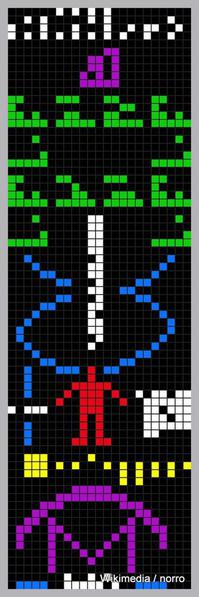On our recent visit to Puerto Rico, we took an unplanned side trip to what might be called ET’s phone booth—a vast radio telescope at the Arecibo Observatory that “listens” to space both for astronomical information and any sign of communication from extra-terrestrials. It’s even sent a message back, in case anyone out there is listening.
We had started the day by visiting the vast Camuy River caverns with our grand-daughter, but along the way my wife, a science teacher, spotted signs along the way for the Observatory. About 10 miles of off-highway driving on twisty local roads (during which we almost decided we must be in the wrong place) we arrived at one of the most amazing sights I’ve seen.
The huge telescope looks like something out of a science-fiction movie, with its huge beams and towers and the 300-meter diameter reflector dish, fitted into a natural bowl in the mountains. In the visitor center, we learned a lot more, including about its history, which has its root in both science and military interests. The scientists wanted an instrument that could pull in masses of data from space and use it to better map the universe; the military wanted an instrument that could spot which was an incoming warhead and which was a decoy.
By the time it was built, 1960-63, it turned out not very useful to the military, but it has become one of the most important centers in the world for planetary science and radio astronomy. That wasn’t the original science plan; the original designers were only planning to study the ionosphere, and were going to build a fixed tower for the equipment. That telescope would have only pointed one way; the one that was actually built has all the equipment suspended over the huge reflector and can be pointed in any direction.
They're serious about this; cell signals could interfere with the data collection!
Over the years, it’s been funded by various government agencies and foundations, including NASA, the National Science Foundation and other. For most of its life, it was managed by Cornell University, but since 2011 a consortium of universities has managed it. Before the transition, budget cuts almost closed it, but scientists world-wide—and the Puerto Rican government—campaigned to save it.
The bowl is made up of thousands of individual panels that need to be kept perfectly-aligned. The technicians wear specal shoes to spread their weight; the soles also match the curve of the reflector!
Aside from mapping vast areas of space, the Observatory has also been the base for SETI—the Search for Extra-Terrestrial Intelligence, including providing huge masses of data for computer hobbyists world-wide to analyze for signals in the SETI@home project. Distributed projects like that have also mined other information from the data; Einstein@home has found 20 pulsars.
We resisted the temptation (others didn't!) to line up family members so that the instrument pod looked like an embroidered hat.
 But Arecibo hasn’t just been listening to see if anyone’s sending messages; in 1974, to celebrate a major upgrade of the telescope, it sent out the Arecibo Message (right), a digitally-encoded message that included images of humans, DNA, chemistry and physics, and the Observatory itself. Since it was aimed at a star 25,000 years away, it seems unlikely we’ll be around for any answer!
But Arecibo hasn’t just been listening to see if anyone’s sending messages; in 1974, to celebrate a major upgrade of the telescope, it sent out the Arecibo Message (right), a digitally-encoded message that included images of humans, DNA, chemistry and physics, and the Observatory itself. Since it was aimed at a star 25,000 years away, it seems unlikely we’ll be around for any answer!
But the biggest part of the Observatory’s public outreach is the Visitor Center, built by the Angel Ramos Foundation and Cornell. Ramos was the founder of Telemundo. Its purpose is to increase public interest in astronomy. It’s filled with interactive exhibits and displays about the telescope, astronomy and atmospheric science. It was a great place to visit while waiting for our turn to go out on the balcony over the bowl and be wowed again.
Imaginative exhibit just inside the Visitor Center places radio-astronomy and physics pioneers (who mostly never met) in a "space cafe" setting
All in all, a day that ran the gamut from underground to way above it—with an ice cream stop between!
Oh, and by the way: you may well think the pictures look familiar. It’s made a number of appearances on TV and movie screens, and even in a video game. It was in 1995’s Golden Eye James Bond movie and in GoldenEye 007, the game; Fox Mulder visited in an X-Files episode, and it’s in the film Species. But perhaps most memorably, it has a feature role in Carl Sagan’s 1997 movie Contact.
MORE GUMBO BLOGS FROM PUERTO RICO! CLICK HERE


Comments (3)